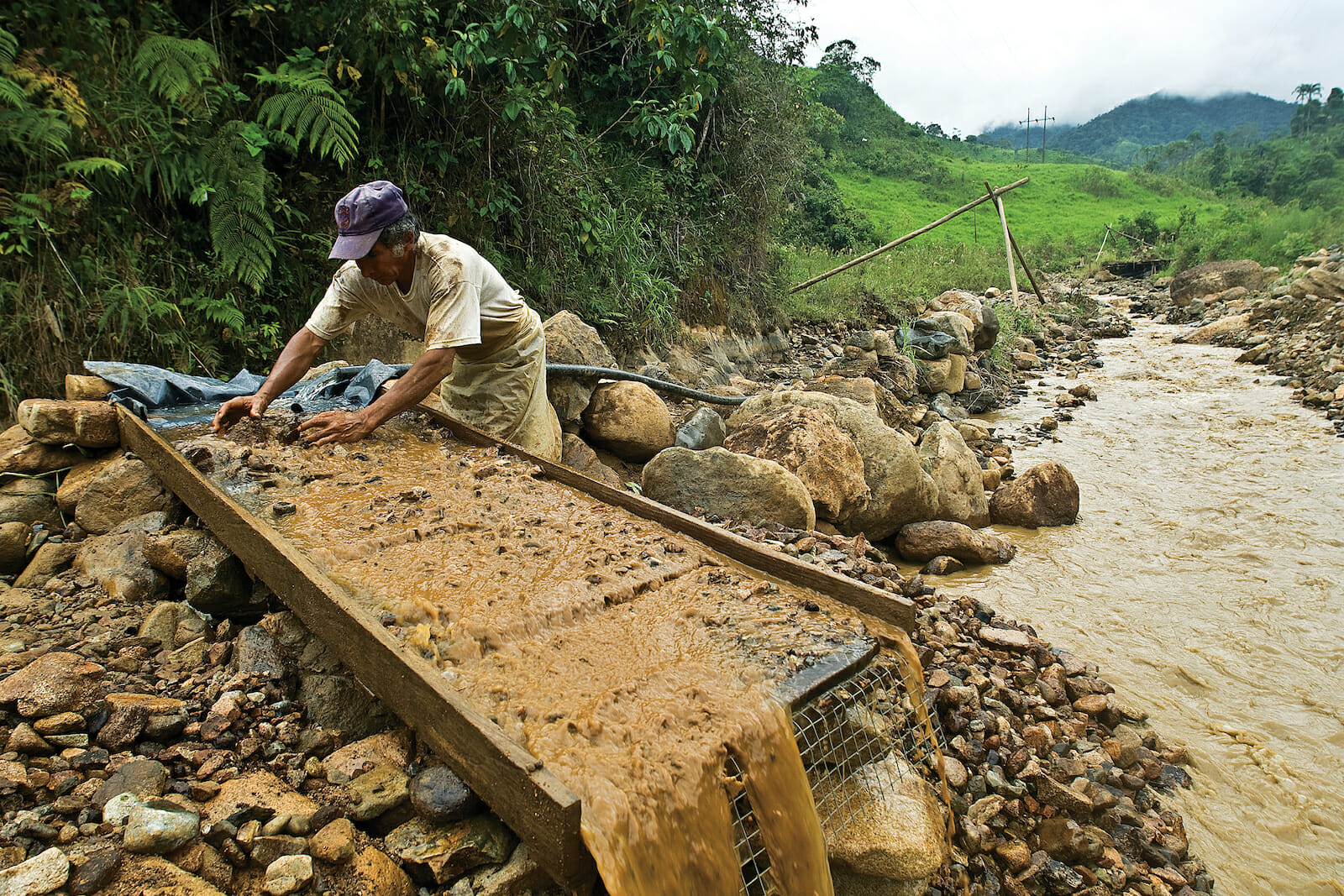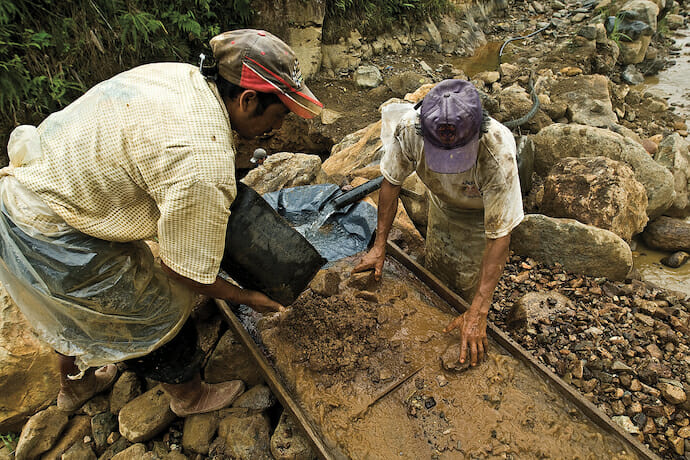
The Dangers of Illegal Gold Mining in South America
In February, the Peruvian Armed Forces Joint Command and the Peruvian National Police started Operation Mercury 2019, aim to restore the principle of authority in the Madre de Dios and La Pampa areas. Operation Mercury is an unprecedented operation in the fight against illegal mining, sexual and labor exploitation, trafficking, and other crimes.
Small-scale gold mining has destroyed more than 200,000 acres of primary rainforest in the Peruvian Amazon in the past decade. This modern-day gold-rush is a hub for organized crime, human trafficking, and a gateway into a treeless, lunar landscape pocked with toxic pools created by chemical runoff from illegal gold mining, stretching far into one of the Amazon’s most treasured reserves.
The Peruvian paradigm portrays the reality of many other underdeveloped and developing countries where minority groups have no other means of subsistence. As a result, they are forced to deforest and destroy the ecosystems they live in, such as the Amazon in the Peruvian case – the world’s lungs and the Earth’s largest rainforest.
The Amazon Socio-Environmental Geo-Referenced Information Project (RAISG) released an updated survey in which researchers identified at least 2,312 illegal mining sites that spanned across six countries: Brazil, Bolivia, Colombia, Peru, Ecuador, and Venezuela. The Amazon permeates the territory of seven countries, with Brazil boasting roughly 60% of the Amazon rainforest within its borders, and Colombia and Peru make up 10% and 13% respectively. The remaining rainforest inhabits Bolivia, Ecuador, Guyana, Suriname, and Venezuela.
The problem with artisanal-scale gold mining is that it requires no heavy machinery and thus involves minimal outlay. Moreover, small-scale gold mining has provided a revolving-door opportunity for poor workers from the Andean highlands to seek their fortune in illegal mining. When they return home, they leave a patchwork of mercury-polluted ponds and sand dunes, a landscape denuded of trees and other vegetation. To get the gold, they strip the land of trees or suck up river sediment and then use toxic mercury to tease the precious metal out of the dirt. The results are environmentally catastrophic.

Furthermore, the use of mercury associated with mining can cause damage to the nervous system, thus creating a public health issue. The inhalation of mercury vapor can produce harmful effects on the nervous, digestive and immune systems, lungs and kidneys, and may be fatal. The mining wells also allow for the reproduction of mosquitoes that bring diseases, such as malaria and dengue fever. The effect of mercury on water drastically contaminates the water supply and the fish we consume. Since fish are the main source of food for many birds and other animals, mercury can seriously damage the health of these species too.
The Wake Forest University’s Center for Amazonian Scientific Innovation (CINCIA) and the Monitoring of the Andean Amazon Project (MAAP) conducted thorough research in the Peruvian Amazon which was released in 2018. The study shows that gold mining deforestation destroyed an estimated 22,930 acres of Peru’s Amazon in 2018, decimating the equivalent of more than 34,000 American football fields in over two years. In the period between 2009 and 2017, mining deforestation increased by 240%, despite a crackdown by the Peruvian National Police conducted during the same period.
Illegal gold-mining entails several problems for the environment and for the surrounding population. The mercury used in gold extraction is affecting indigenous and local populations who live or work near mine sites. One of the worst-hit areas is home to the Yanomami indigenous people, who live in a territory that stretches between Brazil and Venezuela. The indigenous tribes Yanomami and Yekuana have suffered alarming rates of mercury poisoning. The Yanomami depend on the forest for their survival and are pressing authorities to remove and keep away all intruders from indigenous territories and to discontinue plans to open indigenous territories for gold mining and especially large-scale mining.
In Brazil, indigenous or native tribes have a constitutional right to reject any development in their territory. However, the country’s new President, Jair Bolsonaro, has announced a controversial plan to allow mining on indigenous lands without tribal consent. Bolsonaro has said he would stop recognizing new native reservation lands. He has also expressed support for a relaxation of environmental licensing processes for infrastructure projects and other businesses. This could have a major impact in the region, as Brazil is home to the world’s largest rainforest in the Amazon.
Most of these countries, Brazil, Peru, Colombia, Ecuador, and Venezuela are signatories to the International Labor Organization (ILO) conventions which aims to protect people’s rights. Therefore, these countries should not allow human and labor rights to be violated. The ILO estimates that about one million children aged 5 to 17 are engaged in small-scale mining and quarrying activities worldwide. These children toil under dangerous conditions and go without access to schools, health clinics, and other basic necessities. Other than that, the labor convention C169 is an unprecedented and visionary instrument seeking to ensure that indigenous people enjoy human rights without discrimination, exercise control over their own development and participate in decision-making processes that affect their lives.
In sum, the international community and organizations such as the ILO and the United Nations (UN) have an obligation to assure the well-being of the people, to guarantee that conventions and human rights are respected. Huge violations like those presented in this paper make us wonder what governments and leaders are doing to halt this. Fortunately, Peru has been the pioneer to lead a robust task force to crack down on the illegal gold mining and restore the order. However, miners rush to the Amazon to scrape together enough money to start a business or to feed their families while disregarding the catastrophic consequences to their health and homeland.
Who is to blame for? Is it the indigenous people who have nothing to eat? The governments who have failed to assist their citizens? Or the world order? Ultimately, the blame cannot be pinned to one sole group, but the burden of this practice will fall on the world as the rainforest continues to disappear.

